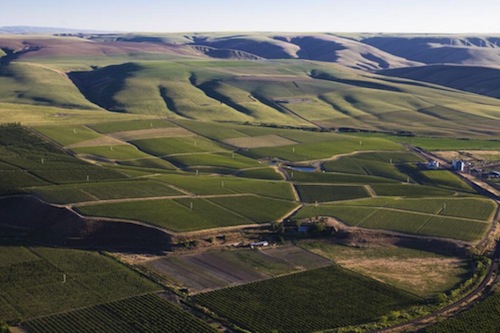
WALLA WALLA, Wash. – When is an Oregon wine not an Oregon wine?
The answer might seem simple enough: never. But if it were that cut and dried, we wouldn’t ask the question.
Sean Sullivan, who covers Washington wine for Wine Enthusiast magazine as well as on his own blog, Washington Wine Report, has thought about it a lot. And he has determined – for now, at least – that wines made from grapes on the Oregon side of the Walla Walla Valley are going to be considered with Washington wines.
Perhaps you just uttered (in your best “Princess Bride” voice): “Inconceivable!”
Listen and read on, and this will make more sense. Or further muddy the waters.
Here’s the interview:
[powerpress]
Sean Sullivan’s top 100 list
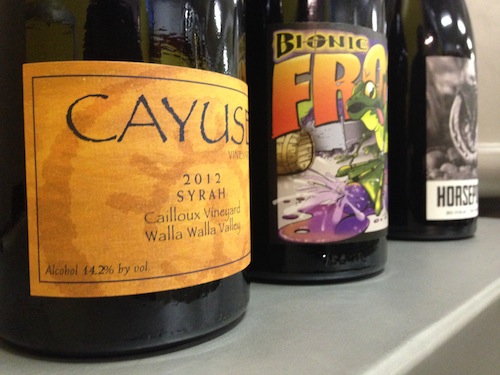
This question about the Walla Walla Valley came about a year ago when a wine from Cayuse Vineyards was No. 1 on Sullivan’s top 100 list for Seattle Metropolitan magazine. Some detractors cried foul because Cayuse is firmly on the Oregon side of the Walla Walla Valley. Owner/winemaker Christophe Baron grows his grapes a couple of miles south of the state line and makes his wines on his property.
This is now going to be an even bigger question this year because Sullivan’s new top 100 list is out in the latest issue of Seattle Metropolitan. The top four wines are from Cayuse, and all are from the Oregon side of the valley.
Sullivan’s top 10 list looks like this:
- Horsepower Vineyards 2012 Sur Echalas Vineyard Grenache, Walla Walla Valley, $115
- Cayuse Vineyards 2012 God Only Knows Armada Vineyard Grenache, Walla Walla Valley, $90
- Cayuse Vineyards 2012 Bionic Frog Syrah, Walla Walla Valley, $95
- Horsepower Vineyards 2012 The Tribe Vineyard Syrah, Walla Walla Valley, $115
- Avennia 2012 Arnaut Boushey Vineyard Syrah, Yakima Valley, $50
- Reynvaan Family Vineyards 2012 Foothills Reserve Syrah, Walla Walla Valley, $65
- Gramercy Cellars 2012 Lagniappe Syrah, Columbia Valley, $55
- Quilceda Creek Vintners 2012 Cabernet Sauvignon, Columbia Valley, $140
- Reynvaan Family Vineyards 2012 In the Hills Foothills in the Sun Vineyard Syrah, Walla Walla Valley, $60
- Betz Family Winery 2012 Père de Famille Cabernet Sauvignon, Columbia Valley, $75
A quick glance at Sullivan’s top 10 wines reveal a heavy leaning toward Rhône red varieties (Grenache and Syrah) and Walla Walla Valley wineries (seven of the 10).
But the most striking feature is those top four wines: all from Cayuse, all from Oregon. The other six are Washington wineries using Washington grapes.
When is an Oregon wine from Washington?
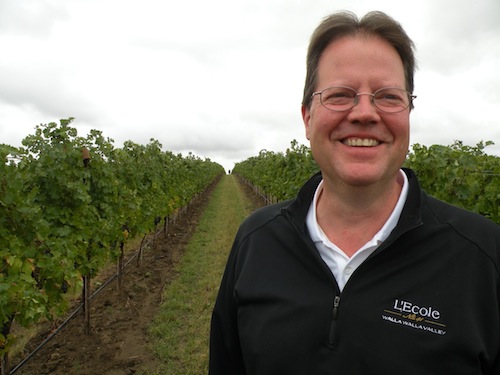
“It creates an interesting conundrum,” Sullivan told Great Northwest Wine. “It’s something I’ve thought a great deal about and continue to think a great deal about.”
Traditionally, the Walla Walla Valley has been considered Washington wine country. Wineries such as Leonetti Cellar, Woodward Canyon, L’Ecole No. 41 and Waterbrook established this in the late 1970s and early 1980s.
When Seven Hills Winery came along, the issue became murkier. The original Seven Hills Vineyard (now known as Seven Hills West) was planted on the Oregon side of the valley. Seven Hills Winery started in Washington, then moved to Milton-Freewater, just south of the state line. More than a decade ago, it moved back north to downtown Walla Walla, where owners Casey and Vicky McClellan are quite happy with their location.
But they still get grapes from the Oregon side of the valley, as do many other wineries from Walla Walla and beyond. In fact, a recent study showed that nearly half the vineyards in the valley are on the Oregon side, and most experts expect the majority of new plantings to take place in Oregon from this point forward.
“Historically, the Walla Walla Valley has always been considered a Washington brand,” Sullivan said. “That’s largely because the town of Walla Walla sits in Washington.”
So when Walla Walla wineries have gone on the road to tell their story, they’ve identified themselves as Washington wineries, even if some of their grapes have come from Oregon. The Oregon wine industry traditionally hasn’t given much consideration to the Walla Walla Valley because of its focus on Pinot Noir and the Willamette Valley.
“So the question becomes: What constitutes a Washington wine, and what constitutes an Oregon wine?” Sullivan said. “Say you’re a Washington winery and you’re growing grapes on the Oregon side of the Walla Walla Valley and you’re crushing them in Washington. From your perspective, it’s a Walla Walla Valley wine. But if you’re traveling around the country and saying, ‘This is a Walla Walla Valley wine and it comes from Oregon, but we’re from Washington,’ that’s a pretty confusing story for people to wrap their heads around.”
And what happens if some of your grapes come from both sides of the valley? What if your vineyard straddles the state line?
“It gets to be complicated pretty quickly,” he said. “But I think over time, it will sort itself out.”
Rocks District could help define Walla Walla Valley wine
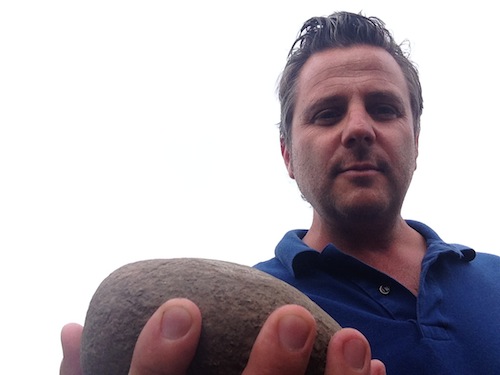
Earlier this year, the federal government approved The Rocks District of Milton-Freewater as an American Viticultural Area. It is an oddity in the American wine industry because while it is entirely within the Walla Walla Valley AVA, it’s on the Oregon side of the border. Thus, wineries from Washington that bring in grapes from The Rocks District and make that wine in Washington cannot use the new AVA name on their labels – thanks to a quirk in federal law. They may label it as Walla Walla Valley or Columbia Valley because the Rocks District is inside those AVAs, too, but that’s it.
The fact that it is an Oregon AVA has undoubtedly caught the attention of the Oregon wine industry and quickly made the Oregon side of the Walla Walla Valley part of the narrative for the Oregon Wine Board in Portland.
So, too, is SeVein, a development on a hill above The Rocks District. SeVein is about 2,000 acres in size and began to be developed about a decade ago. Most of the vineyards already planted are owned by Washington wineries, including L’Ecole No. 41, Leonetti Cellar, Pepper Bridge Winery, Doubleback, Cadaretta and JM Cellars.
Last year, Betz Family Winery in Woodinville announced that it is going to plant a vineyard at SeVein next year, as will Siren Song Winery in Chelan. And earlier this year, Willamette Valley Vineyards announced a similar plan, making it the first large Oregon-focused winery to launch a project in the southern Walla Walla Valley.
Sullivan said that the Rocks District will become known as an Oregon area, as will SeVein.
“Washington will have to share that brand,” he said. “Washington’s star has in part brightened over the decades from having that association with that area of the Walla Walla Valley. It’s certainly proper that we share.”
In the case of Baron and Cayuse, it would appear to be settled that it identifies as an Oregon winery. But Sullivan said he will continue to consider Cayuse wines for his Seattle Metropolitan list for the foreseeable future because the precedent has been set.
“For the time being, we’ll continue to do it this way,” he said.
He agreed with a chuckle that it would be much simpler to move the Oregon border south by about five miles so the entire Walla Walla Valley is in Washington. That idea is unlikely to gain support from Oregon residents or officials.
Sullivan faces health challenge
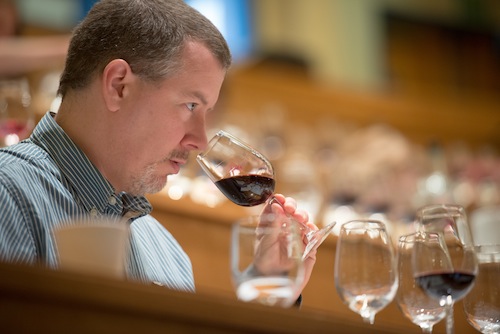
Sullivan also wanted to share that he is facing new challenges after suffering a stroke last month.
“On Aug. 18, I woke up and felt like I wasn’t seeing very well,” he said.
Sullivan went to the hospital, and an MRI revealed he’d had a stroke. The result is that he now has no vision on the left side of both eyes.
“It’s a big change, and it’s very difficult,” he said. “At the same time, I feel very fortunate. I may have woken up with less than half my vision, but I still woke up, and I still have half my vision.”
Sullivan is adjusting, with the hardest part being he can no longer drive because he doesn’t have the visual field to easily see to his left. Even simple tasks such as crossing the street or getting sushi off a rotating belt are new daily challenges for Sullivan.
He said he feels fortunate that it wasn’t the right side of his sight because that would make it much more difficult to read and write, something he does for a living.
Sullivan has no plans to slow down his wine writing, as he covers all of Washington (and both sides of the Walla Walla Valley) for Wine Enthusiast magazine and also contributes to other publications such as Tasting Room.

Leave a Reply